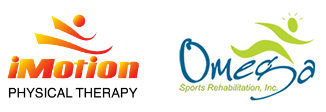Are you sick of leaning on medication for pain relief?
After a car accident or traumatic injury, many people find themselves living with chronic pain. Day in and day out, they live in discomfort and are only able to find solace in prescription medication. The pain-relieving aspects of these drugs only last for a short time, but the addictive habit of taking them is a long-term problem and physical therapy can be the answer.
Long-term opiate use is not a good strategy for chronic pain management. Opioids simply relieve the symptoms (pain) of a greater problem, which increases the risk of addiction.
Physical therapy can help you manage your pain without the need for drugs, providing you the opportunity to wean yourself off opioids. Therapy has been shown to be a far superior alternative to opioids or other pharmaceutical medications for achieving actual, measurable pain relief.
Contact iMotion Physical Therapy to speak with a physical therapist if you are considering opioids for pain management but would like to explore alternative options first.
Why are opioids so dangerous?
For the most part, Advil, Tylenol, and Ibuprofen are safe to use in moderation if you are trying to find immediate relief when recovering from your car accident. It is important to note that opioids and over-the-counter drugs are very different. When people turn to over-the-counter medications to help ease pain, there aren’t many significant health risks.
But with severe pain, from a more serious injury, you may have sustained during the accident, prescription-strength medications may be issued.
However, with serious pain comes serious medication.
Opioids are the most commonly used medication for pain management across the United States. Even though they are commonplace, they contain some shockingly harmful facts:
- About a quarter of heroin addicts began their addiction through prescription opioid dependency.
- More than 2 million people in the United States become addicted to pain medication every year, many of the medications being opioids.
- Opioids are a highly dangerous class of substances. Heroin is among the opioid category and prescription pain relievers like oxycodone, hydrocodone, morphine, and more.
- Opioids are a highly addictive substance and are the most commonly abused prescription medication.
Yes, these facts are disturbing. However, they cannot be ignored. They present a gloomy picture of prescription pain drug consumption in the United States, which experts fear has reached epidemic proportions.
You don’t need to have a history of addiction to become dependent on opioids – in fact, many people who become addicted have never had any issues with drug dependency in the past!
The opioid epidemic in America has gotten so bad in recent years that the Centers for Disease Control and Prevention (CDC) is now recommending that patients explore alternative options for pain relief.
The CDC recommends that opioids now be considered as a “last option” for only the worst pain cases.
Alternative and holistic pain relief methods, including physical therapy, are not as fast as opioids, but these methods do not carry the extreme risks of addiction and overdose!
The opioid epidemic
It’s important that anyone suffering from pain should understand that opioids will not solve the underlying physical problem that is causing the pain. Opioids can make the original problem even worse.
For example, suppose a person is suffering chronic pain several months after having shoulder surgery. The wound from surgery has long since healed, but the pain persists.
If that patient relies on opioids to dull the pain, they run the risk of re-injuring their shoulder. Pain is the way the body tells us that something is wrong.
With opioids removing the pain, that patient might be using their shoulder muscles incorrectly and ultimately making the underlying problem worse.
If that same patient were to work with a physical therapist on pain relief, they stand a much better chance of eliminating the pain entirely. Their shoulder could be healed through physical therapy, manual therapy, proper exercise, body mechanics, and posture work — all without turning to addictive opioid painkillers.
Physical therapy can provide long-term relief
Fortunately, physical therapy can help provide the same pain relief in a much safer, healthier, and more natural way.
Researchers at Stanford University have shown that turning to physical therapy early on, as soon as a person is diagnosed with musculoskeletal pain, reduced the need for opioid pain prescriptions by 7 to 16 percent.
Among patients who did require opioids for pain relief, the duration of using painkillers was reduced by as much as 10 percent.
Physical therapy assists patients in curing the source of their discomfort rather than masking it with medication.
A physical therapist can educate a patient with arthritis (or any other type of chronic pain!) about the best techniques to move and use major muscle groups so that their pain does not worsen.
Another purpose of physical therapy is to strengthen muscle groups that support uncomfortable or painful body parts, allowing for true recovery.
Your choice to pursue physical therapy will not be a quick solution to pain relief in most cases. But your physical therapist will construct a customized plan that will produce measurable results in pain relief.
Because the work will be geared toward curing the source of the pain, you can often eliminate the need for prescription painkillers or opioids.
Ready to find long-lasting relief?
If you suffer from chronic pain, put the pill bottle down. There are safer ways to manage your discomfort than what waits for you behind the pharmacy counter.
Want to know more about how physical therapy can help? We’re here to provide relief for you, so call our office today to schedule your first appointment with a licensed physical therapist.
Sources:
Tags: PT, chronic pain relief, medication, pain medication relief, Physical Therapy, physical therapist, Pain Relief, chronic pain


